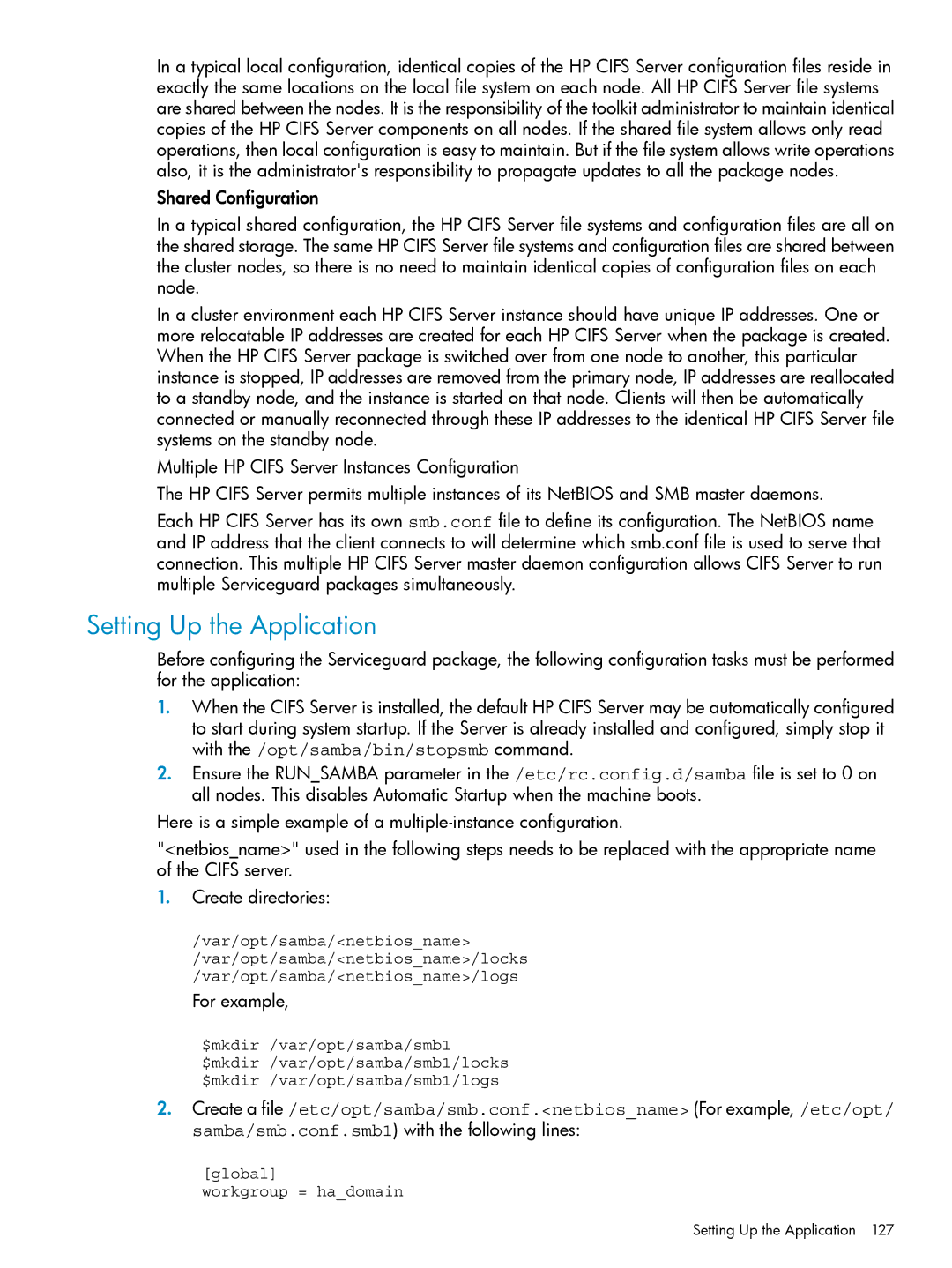In a typical local configuration, identical copies of the HP CIFS Server configuration files reside in exactly the same locations on the local file system on each node. All HP CIFS Server file systems are shared between the nodes. It is the responsibility of the toolkit administrator to maintain identical copies of the HP CIFS Server components on all nodes. If the shared file system allows only read operations, then local configuration is easy to maintain. But if the file system allows write operations also, it is the administrator's responsibility to propagate updates to all the package nodes.
Shared Configuration
In a typical shared configuration, the HP CIFS Server file systems and configuration files are all on the shared storage. The same HP CIFS Server file systems and configuration files are shared between the cluster nodes, so there is no need to maintain identical copies of configuration files on each node.
In a cluster environment each HP CIFS Server instance should have unique IP addresses. One or more relocatable IP addresses are created for each HP CIFS Server when the package is created. When the HP CIFS Server package is switched over from one node to another, this particular instance is stopped, IP addresses are removed from the primary node, IP addresses are reallocated to a standby node, and the instance is started on that node. Clients will then be automatically connected or manually reconnected through these IP addresses to the identical HP CIFS Server file systems on the standby node.
Multiple HP CIFS Server Instances Configuration
The HP CIFS Server permits multiple instances of its NetBIOS and SMB master daemons.
Each HP CIFS Server has its own smb.conf file to define its configuration. The NetBIOS name and IP address that the client connects to will determine which smb.conf file is used to serve that connection. This multiple HP CIFS Server master daemon configuration allows CIFS Server to run multiple Serviceguard packages simultaneously.
Setting Up the Application
Before configuring the Serviceguard package, the following configuration tasks must be performed for the application:
1.When the CIFS Server is installed, the default HP CIFS Server may be automatically configured to start during system startup. If the Server is already installed and configured, simply stop it with the /opt/samba/bin/stopsmb command.
2.Ensure the RUN_SAMBA parameter in the /etc/rc.config.d/samba file is set to 0 on all nodes. This disables Automatic Startup when the machine boots.
Here is a simple example of a
"<netbios_name>" used in the following steps needs to be replaced with the appropriate name of the CIFS server.
1.Create directories:
/var/opt/samba/<netbios_name> /var/opt/samba/<netbios_name>/locks /var/opt/samba/<netbios_name>/logs
For example,
$mkdir /var/opt/samba/smb1
$mkdir /var/opt/samba/smb1/locks $mkdir /var/opt/samba/smb1/logs
2.Create a file /etc/opt/samba/smb.conf.<netbios_name> (For example, /etc/opt/ samba/smb.conf.smb1) with the following lines:
